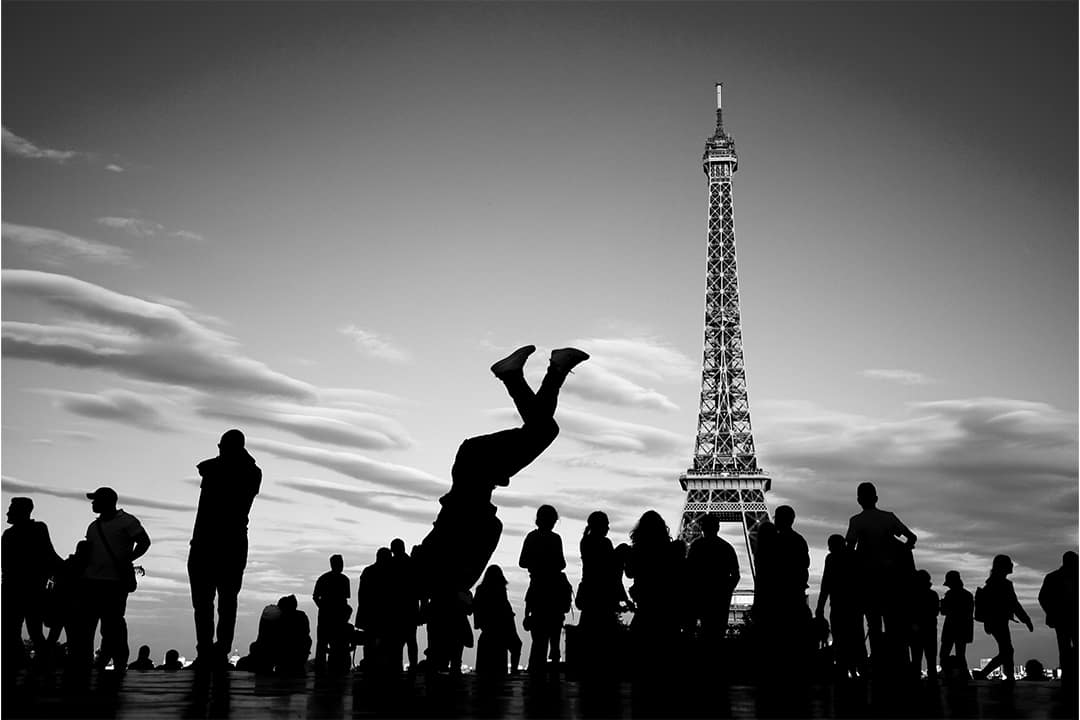From its humble origins in the South Bronx to its spot on the upcoming global stage in the 2024 Paris Olympics, breaking has transformed into a revolutionary form of expression. Breaking is joining the Olympics in an attempt to attract a younger audience — but it also presents a unique opportunity for dancers to showcase their talents on the biggest stage for competitive sports.
Breaking through time
The dance style known as breakdance, or “breaking,” was cultivated by hip hop’s cultural development among African-American and Latine communities in New York. Through the 1970s, breaking emerged from the streets of the Bronx, New York City but had trouble gaining popularity in major cities like Los Angeles and Miami, possibly in part due to a lack of coordinated effort between different dance groups to popularize it.
Breaking gained credibility through media and pop culture in the ’80s and gained international popularity in the ’90s. By 2010, major Canadian cities such as Toronto and Vancouver and countries such as Australia and France hosted independent breaking competitions.
Breaking was first featured in the Olympics at the 2018 Youth Olympic Games in Buenos Aires, Argentina, and the International Olympic Committee (IOC) claims it captivated over 2.5 million views across social media.
Why add new events to the Olympics?
Thomas Bach, the President of the IOC, wrote in his 2020 Olympic Agenda that he strives to revamp the Olympics and increase its viewership by appealing to a younger demographic. The Olympics has recently struggled to capture millennials’ fascination, and the age demographic in which it’s most popular has gone up with each Olympic Games. There was a six per cent increase in the median age of Olympic viewers between the 2012 London Games and the 2016 Rio Games. At the same time, NBC experienced a 15 per cent television decrease in viewership between the 2012 London Olympics and the 2016 Rio de Janeiro Olympics.
Adding new events that might be considered more socially relevant may appeal to younger viewers. Grace Butler, a fourth-year English major and a Varsity Blues dancer, wrote in an email to The Varsity that “if the Olympics continues to promote [itself on] social media [to] showcase [athletes’] talents and surreal abilities [it might be able to attract] younger audiences, who can idolize these athletes as they grow up and learn to play many of these sports and practices.”
The World DanceSport Federation brought on Jean-Laurent Bourquin, a former member of the IOC, in hopes of incorporating rock-and-roll or Latin dance into the Olympics. Instead, Bourquin decided to give breaking a platform at the 2018 Youth Olympic Games, using it as a platform to introduce breaking for the 2024 Paris Olympics.
Now, Alien Ness, a veteran breakdancer, explained to The New York Times that the Olympics adding breaking to its events list will change “everything.” Paris 2024 will have large audiences tuning in to watch athletes they have kept up with through social media. “Social media has allowed for millions of people [globally] to get inside scoops into the [athletes’] training and… [Olympic] preparation,” Butler wrote. “Many [people] will want to watch the event to see how it all paid off for the athletes!”
Next summer, Phil Wizard from Vancouver, Tiffany Leung from Toronto, Emma Misak from Vancouver, and Samuel Cyr, known as Mass, from Montréal are all Canadian breakdancers viewers should watch out for.
The potency of dance
I was intrigued to ask a dancer at U of T about their perspective on whether dance is an art medium or a sport.
“Most people would definitely say it’s an art, and they won’t really take into consideration how much we train… like athletes,” Lily Perritt, a first-year kinesiology major on U of T’s pom team, said in an interview with The Varsity.
I also talked to Geoff Reyes, the CDS breaking sports director, higher performance director of the National Breaking Team of Canada, and president of Breaking Canada. “Breaking’s an art,” he said. “[Yet] as soon as you put [an] art form into competition, it can become a sport.” Consequently, he thinks breaking shouldn’t be categorized as only an art or only a sport.
However you categorize it, the inclusion of breaking at Paris 2024 allows elite dancers to showcase their talents internationally. Butler wrote that she thinks the addition of breaking to the Paris 2024 games “[will] inspire many new dancers to want to train, as well as inspire current dancers and artists to continue mastering their craft.”
Dance provides athletes opportunities to creatively express themselves, consistently work toward something they are passionate about, and maintain positive exercise habits. Breaking is an incredibly challenging dance style that can appeal to and impress large audiences globally.
“[Breaking is] one of the hardest [dance] styles,” said Perritt. “So I feel… dancers [will receive] more respect for the athletic side of it [and] people [can witness how challenging] dance styles can be.”
Finally, breaking can provide individuals with an outlet to find and become better versions of themselves through self-discovery. “Dance is what allowed me personally to not be afraid to be who I am,” Reyes said.


